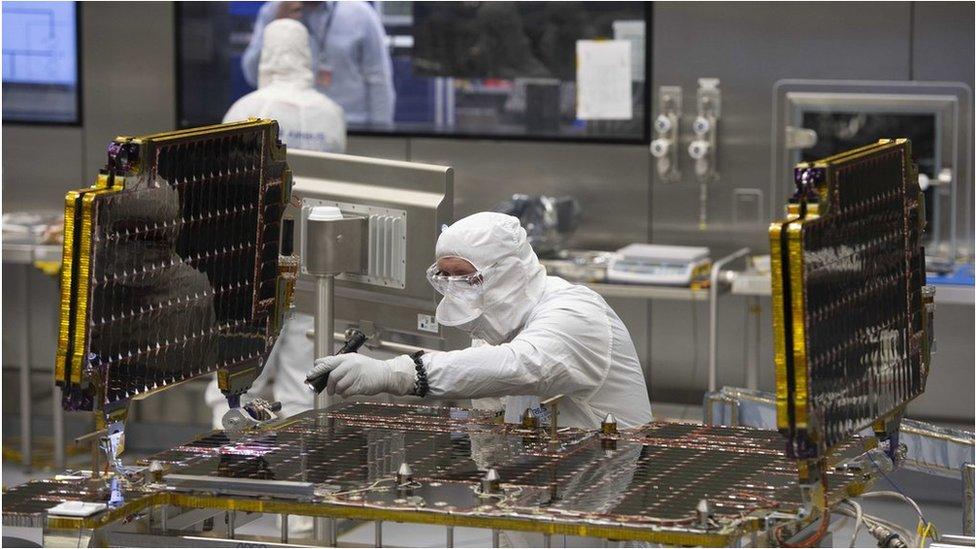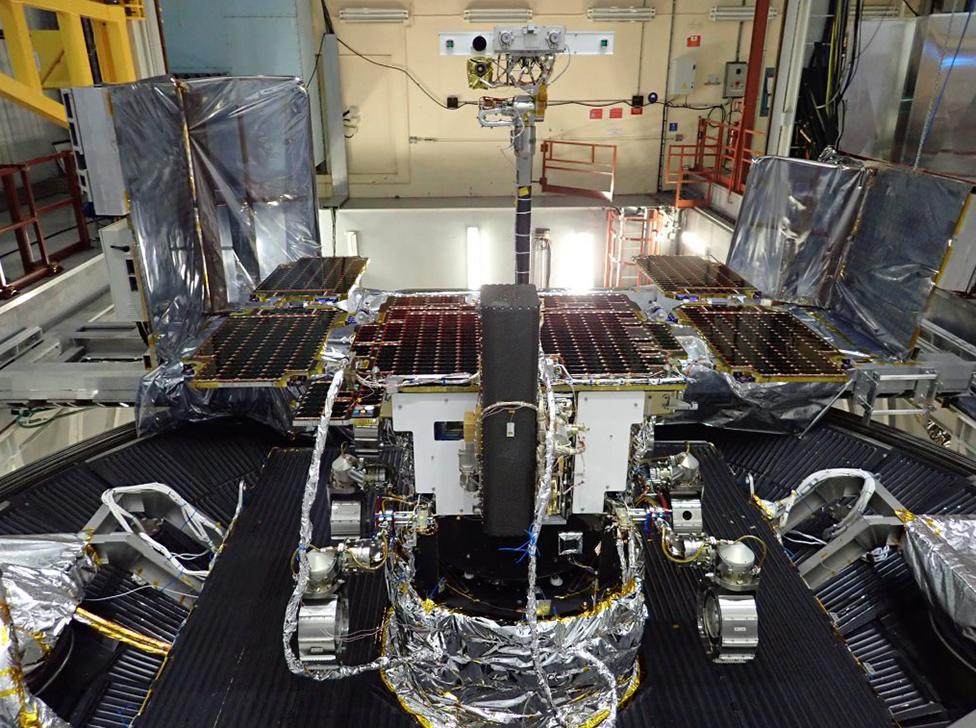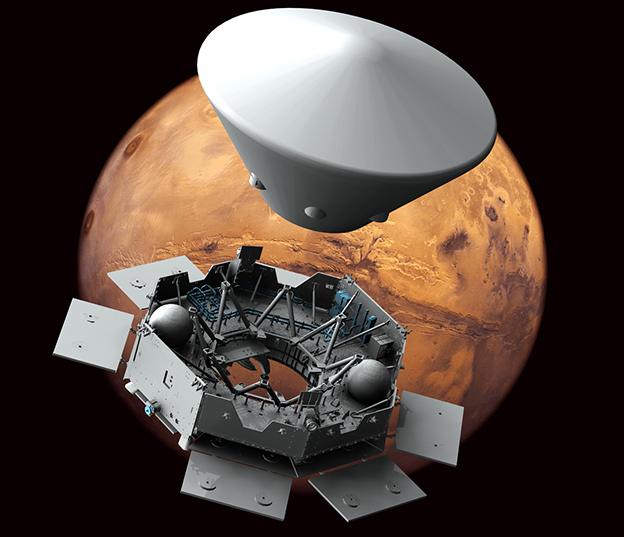Europe's Rosalind Franklin Mars rover to make 'pit stop' for repair
- Published

The glue issue has occurred in the brackets holding the solar panel wings in place
Europe's Mars rover will have to make a "pit stop" for a minor repair when it is moved from France to Italy.
The vehicle, which is currently undergoing final preparations in Cannes prior to a summer launch, has developed a small problem with its solar panels.
Glue that holds brackets in place on the folding arrays has come unstuck.
It's not considered a serious problem and will be fixed when the "Rosalind Franklin" robot passes through Turin on its way to the launch site.
Rosalind Franklin, also known by its codename ExoMars, is a joint venture of the European and Russian space agencies (Esa and Roscosmos).

The rover is equipped with instruments to search for life

Various companies and institutions have been contracted to contribute pieces of hardware under the leadership of the Franco-Italian aerospace outfit Thales Alenia Space.
It is TAS that will be moving the rover from its Cannes factory to one in Turin before shipping out to the launch complex at Baikonur in Kazakhstan. The robot is due to arrive at the famous spaceport in mid-May.
The glue defect has occurred in the hinge system on the top-deck solar arrays; specifically, in the brackets that hold and fold the outer wings for the journey to Mars.
The issue was noticed in both the rover test model and the "flight model" (the version of robot that actually goes to Mars) after they emerged from thermal-vacuum testing.
This is the process in which hardware is put in a chamber and confronted with the kinds of swings in temperature it will likely experience during a space mission.
The fix will now involve putting bolts through the brackets to make sure the solar panel wings are securely fastened. Rosalind Franklin is well within its mass target, so engineers are unconcerned about resorting to a heavier solution than glue.
Although not a major issue, this is a glitch the project could have done without.
Officials are in the process of trying to corral the final phases of preparation against the background of a ticking clock.
Opportunities to go to Mars come around only once every 26 months when the planets are favourably aligned. This means Rosalind Franklin has to leave Earth in a narrow window in July/August this summer or skip to the next launch possibility in 2022.
The heads of the agencies, Esa's Jan Wörner and Roscosmos's Dmitry Rogozin, announced on Monday that they would hold a joint press conference in Moscow on 12 March to give a status update.

Artwork: The "Russian doll" comprises the rover and platform in a capsule attached to a cruise vehicle

All the hardware required to send Rosalind Franklin to Mars and land it gently on the surface is built, but there is still a long list of checks that need to be gone through before anything can be put atop a rocket.
This list includes some final stand-out tests on the parachutes and the retro-rockets that will lower the robot to its touchdown location on the Oxia plain at Mars' equator.
There is also the general compatibility and fit-checks of the various elements that will comprise what some describe as the "Russian doll" stack.
This refers to the rover and its landing platform, which together fit inside a capsule, which is then attached to a "cruise stage" - the spacecraft that shepherds everything to the Red Planet.
To give one example of the checks that must be completed: the cruise stage spins for stability in flight. The rover and platform inside their capsule therefore have to be balanced carefully, just like a car tyre, to ensure there is no disruptive wobble.
If all goes to plan, Rosalind Franklin should land on the Red Planet in March 2021. It is being equipped with instruments and a drill to search for signs of life - in the present day or in the distant past.
It is one of four Mars missions targeting the July/August launch window. The others are being prepared in the US, the UAE and China.
Originally published on 24 February, this page was updated on 25 February to correct some inaccuracies and add extra information.
Jonathan.Amos-INTERNET@bbc.co.uk, external and follow me on Twitter: @BBCAmos, external